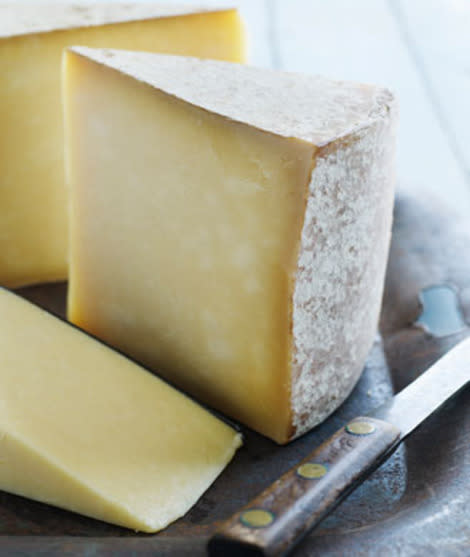This is Your Belly on Cocktails, Cookies, and More
By Elizabeth Goodman Artis
Cocktails, cupcakes, salty potato chips, a big juicy cheeseburger. These things all taste pretty darn good as they pass through your lips, but what happens after they move on down the road? "No matter what you swallow, the mechanisms are the same: past the food pipe, through the esophagus, and into your stomach," says Ira Breite, M.D., a clinical assistant professor in the division of gastroenterology at NYU Langone Medical Center. "But there are differences in how specific nutrients like proteins, carbs, and fats are absorbed," he says.
Here's what happens when some of your favorite guilty pleasures hit your belly, and how to take a healthier approach:
1. Alcohol: Unlike just about everything else that you swallow, alcohol is actually absorbed directly by the stomach (the stomach essentially serves as a waiting room for everything you eat; nothing is processed and absorbed until after it reaches the small intestine ). Once that glass of vino-or margarita-hits your belly, any food there at that moment delays the absorption of alcohol into the bloodstream, which is why you feel woozier faster if you're drinking on an empty stomach. The higher the percentage of alcohol your cocktail contains, the longer it stays in your system and the drunker you feel. And if you're a woman (or you are on the slim side), the longer it takes for your body to process the alcohol.
The Healthier Approach: Moderation-and slow consumption-is key. While on the whole it's better to drink with food in your system, it won't make you less drunk, Dr. Breite says. "Drink less or spread drinking out so your body has time to metabolize it. If you down five shots and a loaf of bread with it, you'll just be really drunk and full of carbohydrates," he says.
(Overindulged in your favorite margarita recipe? Here are some quick tips to get back on track!)
2. Sugar: Sugar in all of its forms, with the exception of artificial sweeteners, has a direct effect on your metabolism and energy. All sugar is converted into glucose and fructose, which is absorbed through the small intestines into the blood. Your body uses it as an easy and quick source of fuel , but it runs out quickly (hence the famed "sugar crash").
The Healthier Approach: Sugar is, well, sweet, and that makes it a key part of some of the tastiest things on the planet: homemade chocolate chips cookies, crème brulee, chocolate everything. But it's also all empty calories, and unless you're an elite athlete, you're probably not going to burn all those empty calories off, so you don't need more from excess sugar consumption. Watch out for the hidden sources that don't serve any pleasurable purpose: sports drinks, soda, that cache of gummy bears on your co-workers desk you eat because you're bored.
3. Refined Carbs: Refined carbs like white rice, pasta, and flour have basically had their healthy bits removed; for example, white rice was once brown rice before it got its fiber-rich exterior stripped away. So not only are refined carbs low in nutrients, they are converted quickly by the body into sugars and can boost blood sugar levels. When these levels are high, your body uses sugar instead of fat stores for an instant energy boost. You get hungry again faster after a refined-carb heavy meal (the reason you're ready to eat again an hour after a huge plate of pancakes), plus your body isn't using fat stores for energy, which is what you want.
The Healthier Approach: Yes, a crusty baguette is a wonderful thing, as are pancakes, and sometimes only white rice with beef and broccoli will do. Still, try to get as many of your everyday carbs from slow burning, complex sources like beans, whole fruits and veggies, and whole grains. That way you have room for the occasional splurge.
(Thinking of ordering Chinese for dinner? Here's what to order--and what to skip!)

4. Saturated and Trans Fats: High-fat foods from animal sources like marbled steak, cheese, and butter, or artificial trans fats (typically used to keep cookies and chips from spoiling after long periods on store shelves) behave (badly) in two ways: In the short term they can create digestive issues like constipation or even diarrhea. Long term, they raise levels of bad (LDL) cholesterol, which can lead to stiff arteries and an increased risk of heart attack or stroke. Trans fats are an even worse culprit since they not only raise bad cholesterol, but actually deplete the good (HDL) kind.
The Healthier Approach: Luckily, trans fats are under fire, and many manufacturers have removed them from their products. So when you buy packaged foods, read labels and make sure there are as few ingredients as possible. Opt for leaner meats and make cheese a splurge rather than part of your everyday diet . Go for the good stuff on the weekends; a small slice of something French and decadent, or really good Parmesan rather than ordering American cheese on your lunchtime sandwich out of habit.
More on SHAPE:
10 New Ways to Eat Eggplant
20 Surprising Ways to Enjoy Green Tea
The Best and Worst Sushi for Weight Loss
